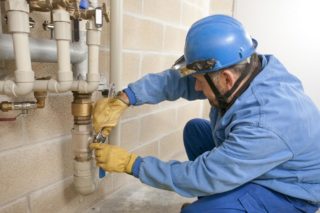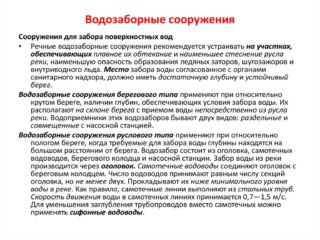To ensure uninterrupted supply and drainage of drinking water, resource supplying organizations monitor the operation of the formed water supply and sanitation systems. The functions of treatment facilities are capable of creating a kind of water cycle in the natural and household environment. Undoubtedly, the quality of the consumed resource has a direct impact on human health. The uninterrupted operation of these systems is ensured by the developed regulatory framework, which provides for areas of responsibility in terms of the operation of hot and cold water supply and sewerage systems and requirements for the quality of water supplied to the consumer.
Who is responsible for the provision of water supply and sanitation services

Water and sewerage enterprises are responsible for the supply and discharge of drinking water through centralized trunk networks. Their balance sheet includes a staff of employees who have undergone certain theoretical and practical training. Specialists in the field of water and sewage services can be divided into 3 categories:
- workers of the operational staff;
- operational staff;
- repair workers.
The area of responsibility of an employee of the operational staff includes control of the work of the chief technologist and his subordinate employees who ensure the quality of the supplied resource: laboratory assistants, foremen, electricians, mechanics, etc. Workers of the operational staff are responsible for the work of emergency teams, and workers of the repair staff are responsible for the implementation of planned repair measures without taking into account urgent intervention.
Organization of work at water and sewer enterprises
The equipment of the water supply engineering networks is divided between the repair crews and sections. The functions of operational and repair teams are similar and their interaction takes place according to the instructions for the operation of technical water supply facilities.
The rational activity of the employees of the water and sewage system is ensured, including through the archive, which must be placed in the resource supplying organization and include all technical documentation. Backup copies of the necessary information are freely available and are subject to issuance at the request of workers of the repair and operational staff.
The job description of an employee of a production or technical department should stipulate the duty of timely updating of archived information. The storage of the specified documentation must be done in several places and on several media in order to avoid losing the necessary information in the event of a computer breakdown or in the event of other unforeseen situations.
Commissioning of water and sewage facilities is formalized with the following documents:
- acts on the performance of hidden work;
- technical documentation for equipment (passports and certificates);
- acts of sanitization of engineering communications;
- documentation on the performance of hydraulic tests of structures;
- documentation on the test of fluid loss of hydrants;
- design drawings agreed with all the necessary departments;
- job logs containing troubleshooting information.
These documents should also be kept in the archive and provided to the operational staff at their request in a timely manner. This will make it possible to take measures to eliminate the emergency situation in a timely manner.
Water intake facilities
Groundwater intake structures are also quite often used in the water and sewage system and are classified into four types: shaft wells, hood chambers, horizontal water intakes and water intake wells.
Waste water drainage system
The operation of the drainage system of settlements ensures the drainage of domestic wastewater. Centralized sewerage networks are used to receive and treat wastewater. Connection of subscribers to the centralized sewerage network may be allowed if there is an appropriate technical feasibility, taking into account the standards for wastewater discharge by the consumer.
The work of the sewage treatment plant is supervised by a headquarters with a well-equipped laboratory, including qualified chemists, microbiologists, laboratory assistants, engineers.
The main task of control is to obtain a high-quality resource at the output while ensuring economical and uninterrupted operation of the station. The quality of functioning of individual structures is controlled by the composition of wastewater and the formed sludge before and after their stay at each stage of treatment.









